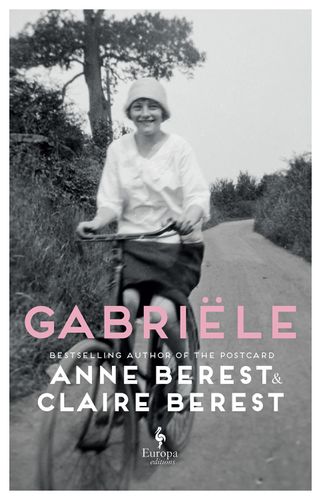This month we're reading fiction translated from: Japanese, French, Italian, Danish and Swedish.
Vanishing World
Sayaka Murata, translated from Japanese by Ginny Tapley Takemori
Sayaka Murata has proven herself to be one of the most exciting chroniclers of the strangeness of society, x-raying our contemporary world to bizarre and troubling effect. Her depictions of a happily unmarried retail worker in Convenience Store Woman and a young woman convinced she is an alien in Earthlings have endeared her to millions of readers worldwide. Vanishing World takes Murata's universe to a bold new level, imagining an alternative Japan where attitudes to sex and procreation are wildly different to our own.
As a girl, Amane realizes with horror that her parents "copulated" in order to bring her into the world, rather than using artificial insemination, which became the norm in the mid-twentieth century. Amane strives to get away from what she considers an indoctrination in this strange "system" by her mother, but her infatuations with both anime characters and real people have a sexual force that is undeniable. As an adult in an appropriately sexless marriage – sex between married couples is now considered as taboo as incest – Amane and her husband Saku decide to go and live in a mysterious new town called Experiment City or Paradise-Eden, where all children are raised communally, and every person is considered a Mother to all children. Men are beginning to become pregnant using artificial wombs that sit outside of their bodies like balloons, and children are nameless, called only "Kodomo-chan." Is this the new world that will purify Amane of her strangeness once and for all?
Read our staff review here.
Gabriële
Anne Berest & Claire Berest, translated from French by Tina Kover
The year is 1908, the height of the Belle Epoque, and a brilliant, young French woman named Gabriele, newly graduated from the most elite music school in Europe, meets a volcanic Spanish artist named Francis. Following a whirl-wind romance, they marry and fall headlong into a Paris that is experimenting with new forms of living, thinking, and creating. Soon after marrying Francis, Gabriele meets Marcel, another young artist, five years her junior. Soon, Francis, Marcel, and Gabriele are all three involved in a fervent affair that will change the course of art history and redefine the avant-garde.
Surrealism, Dada, and Abstraction are among the new artistic practices and new ideas that emerge from this electric love triangle in the following decade, during which the Belle Epoque sours and the world descends into the devastation of World War I. Francis Picabia, Marcel Duchamp, and Gabriele Buffet – the protagonists of this brilliantly imagined "true novel" – are vividly reimagined by the Berests.
Read our staff review here.
The Image of Her
Simone de Beauvoir, translated from French by Lauren Elkin
One woman strives for perfection - it's an old story. This is Simone de Beauvoir's gripping version.
Laurence lives what appears to be an ideal existence. Her life features all the trappings of 1960s Parisian bourgeoisie- money, a handsome husband, two daughters and a lover. She also has a successful career as an advertising copywriter, though her mind unbidden writes copy whilst she's at home, and dreams of domesticity in the office.
But Laurence is a woman whose happiness was relegated long ago by the expectation of perfection. Relentlessly torn by the competing needs of her family, it is only when her 10-year-old daughter, Catherine, starts to vocalise her despair about the unfairness of the world that Laurence resists.
One Hundred Flowers
Genki Kawamura, translated from Japanese by Cathy Hirano
Yuriko leads a quiet, orderly life as a piano teacher. It's New Year's Eve and her grown-up son Izumi comes to visit. Yuriko makes him his favourite meal: omelette and hayashi rice. Together, they look like a normal family. But Yuriko has a secret. Many years earlier, when Izumi was a boy, Yuriko suddenly disappeared for an entire year. She returned, but the lost year was never discussed.
Now as Yuriko begins to lose her memory, Izumi is forced to race against time as he seeks the truth behind this long-buried mystery. Will he learn to understand the woman his mother once was, before it is too late? And is he ready to become a father himself?
One Hundred Flowers is a story about the preciousness of every moment, the beauty and pain of family love, and the healing power of letting go.
Money to Burn
Asta Olivia Nordenhof, translated from Danish by Caroline Waight
Maggie and Kurt are struggling to hold their marriage together after their only daughter has left home. They live in an old farmhouse in Nyborg but somehow keep missing each other, unable to discuss the events that brought them together.
Decades ago, a passenger ferry called the Scandinavian Star caught fire, killing 159 people. The event is still considered a national tragedy in Denmark and Norway. Years later, it was revealed not to be an accident, but the result of an insurance scam gone wrong. How is the Scandinavian Star disaster connected to Maggie and Kurt? How does money affect and infect our closest relationships? And is it ever possible to escape?
A groundbreaking, profound and intimate novel about capitalism's effects on the human heart: Money to Burn is the first volume of the Scandinavian Star series, a new masterpiece of Danish literature.
When the Cranes Fly South
Lisa Ridzén, translated from Swedish by Alice Menzies
Bo lives a quiet existence in his small rural village in the north of Sweden. He is elderly and his days are punctuated by visits from his care team and his son.
Fortunately, he still has his memories, phone calls with his best friend Ture, and his beloved dog Sixten for company.
Only now his son is insisting the dog must be taken away. The very same son that Bo is wanting to mend his relationship with before his time is up. The threat of losing Sixten stirs up a whirlwind of emotions and makes Bo determined to resist and find his voice.
An instant number one bestseller in Sweden and winner of the Swedish Book of the Year, When the Cranes Fly South is a profoundly moving and emotional novel about one man's desire to preserve his autonomy, about the multitude of stories contained within a life, and the big things for which we have no words.
There's No Turning Back
Alba de Céspedes, translated from Italian by Ann Goldstein
The young women studying at the Grimaldi yearn for new kinds of life. Monitored by the nuns who run the college, eight of them form a close group, sharing confidences and hopes for the future. But each, too, has her private secrets – a child from an early love affair, frustrated artistic ambitions, burning desires and petty jealousies. With the passing months, their paths begin to diverge, as each woman struggles towards her own idea of freedom.
A virtuosic group portrait, There's No Turning Back broke radical new ground in representing modern women's lives when it first appeared in 1938, facing immediate censorship by the Fascist authorities. Published in a new translation by the acclaimed Ann Goldstein, it is a powerfully moving story of women coming of age in a turbulent world.
Available from 20 May.
Waist Deep
Linea Maja Ernst, translated from Danish by Sherilyn Nicolette Hellberg
Five friends from university; seven summer days in a cabin in rural Denmark. A chance to swim, sunbathe, flirt, read and mess around like in the old days.
At least that's what Sylvia had hoped. But when her friends arrive with real jobs, kids and partners, Sylvia is left wondering what happened to the radical ways of living they embraced at university. Worse, Esben and Karen announce their wedding, striking a blow to Sylvia's simmering, decades-long crush on Esben – a crush that her monogamous girlfriend Charlie would definitely not approve of.
Within the rest of the group, desire and anxiety swirl in equal measure. Quince finally feels at home in his body and is ready to rave, but Gry's kids have bedtime routines that get in the way. And Gry has also brought her husband Adam, the poster child for a heterosexual masculinity Quince can't decide if he wants to tear down or tie down.
Available from 20 May.










